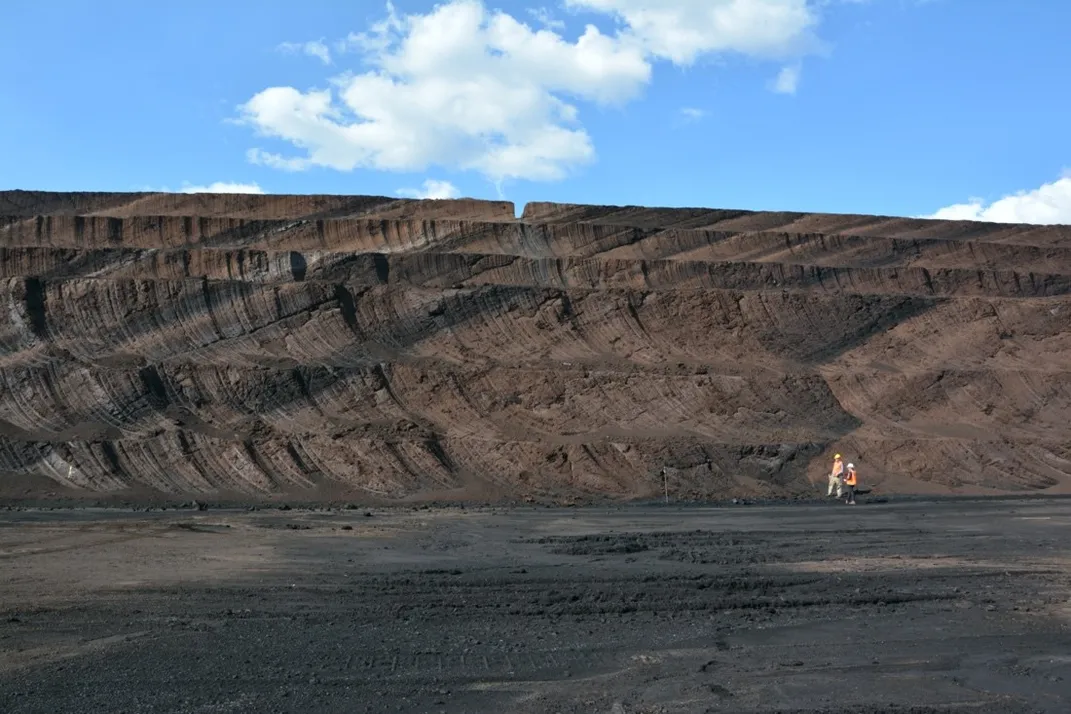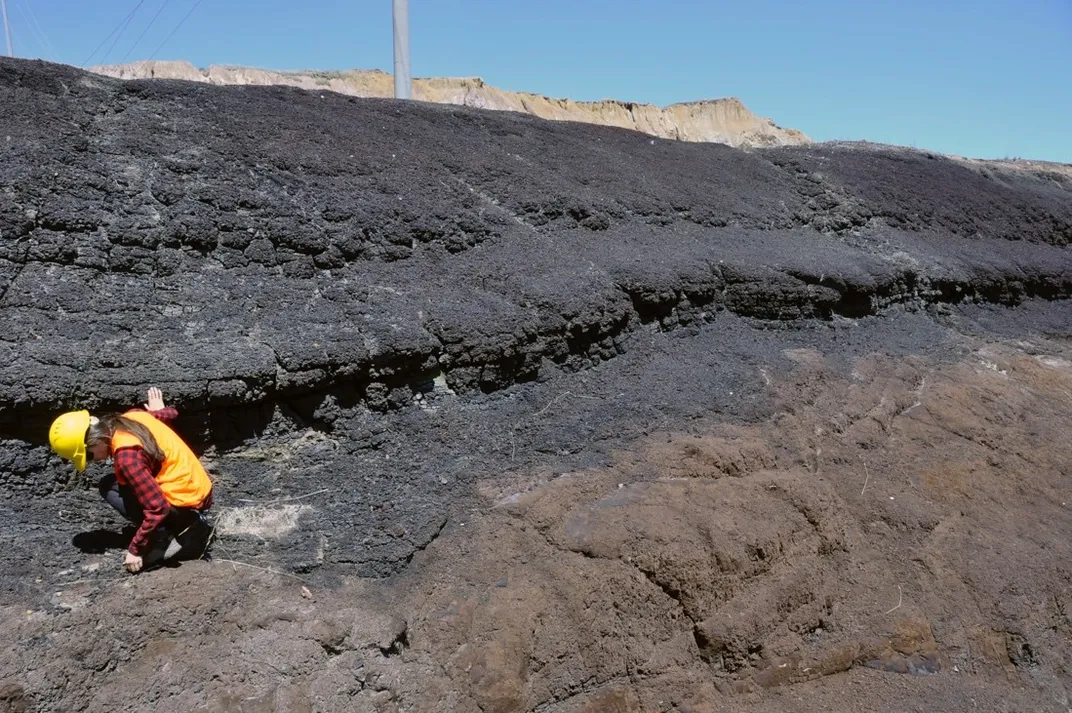NATIONAL MUSEUM OF NATURAL HISTORY
Drop in Greenhouse Gas Caused Global Cooling 34 Million Years Ago, Study Finds
The findings confirm that carbon dioxide plays a significant role in any climate change.
/https://tf-cmsv2-smithsonianmag-media.s3.amazonaws.com/blogging/featured/Mountain_landscape_covered_in_ice_sheets.jpg)
Global warming’s symptoms vary wildly from hurricanes and flooding to desertification and fires. But all come from the buildup of gasses like carbon dioxide. The more carbon dioxide there is in the atmosphere, the warmer the world gets. Now, researchers have shown the opposite is also true.
A paper published in the journal Nature Geoscience confirms that a drop in carbon dioxide around 34 million years ago caused Earth to enter a period of global cooling, called an icehouse state.
"Before then, vast regions of the world, including Antarctica, were covered in lush rainforests. There were no permanent icesheets,” said Vera Korasidis, a palynologist, or scientist who studies pollen and pollen fossils, and Peter Buck Postdoctoral Fellow at the Smithsonian’s National Museum of Natural History, who co-authored the study.
During this time, known as the Eocene Oligocene transition, the world’s average temperature decreased by over 5.4 degrees Fahrenheit (3 degrees Celsius) in roughly 300,000 years.
“This geologically quick change shows how atmospheric carbon dioxide drives major shifts in climate,” said Vittoria Lauretano, an organic geochemist working on paleoclimate at the University of Bristol’s Organic Geochemistry Unit and lead author of the paper.
A chilly trend
Marine geologic records show that before 34 million years ago Earth was in a balmy greenhouse state. There were no icesheets or glaciers on any continents. Then, there was a sudden cooling.
“Geologically speaking, it happened pretty fast. Antarctica hadn’t been glacial before that for a very long time,” said David Naafs, an organic geochemist at the University of Bristol’s Organic Geochemistry Unit and co-author of the paper.
All of this existing knowledge mainly came from marine sedimentary samples. But there was less evidence of how the ancient transition happened on land, because it was hard to find a record in good condition.
“Usually, we don’t get temperatures from land-based records. But this research uses a new approach to find those past temperatures in soft coal across that transition,” said Brian Huber, a paleoclimatologist at the museum who was not involved in the research.

Mapping microscopic fossils
To piece together a land record of past climate change, the team analyzed microscopic fossils from bacterial lipids preserved in coal from the Eocene and the Oligocene, and across the transition.
Lipids are biological molecules, and all organisms make them. But the way lipids are built changes based on the temperature when they’re constructed.
“If you have bacteria growing at a high temperature, they will make lipids that look a certain way. If the bacteria grow at a cold temperature, their lipids will look different,” said Naafs. “We can look for those changes in fossils to find signs of climate change.”
Coal is the perfect hunting ground for lipid fossils, because of its preservation properties.
"It also only forms on land, so it provides a unique terrestrial record,” said Korasidis. “Australia, especially, has the thickest Eocene-Oligocene coal reserves in the world.”

So, Korasidis collected lipid-rich coal samples from southeast Australia. Using these samples, Lauretano and Naafs uncovered the same drop in land temperature as seen in marine records. Korasidis also confirmed this analysis by studying the coal pollen and revealing that plant populations shifted during this period to favor colder climates.
“The key to this study is that we found really similar trends between what happened on land and in the ocean, so we realized there must be a global mechanism driving behind it,” said Korasidis.
Catalyzing an icehouse
In the past, scientists were unsure why the Eocene Oligocene transition happened. For a while, they thought it was because of a change in the Antarctic ocean’s currents. But that theory gradually grew out of favor.
“The question has always been what was driving this change,” said Naafs.
Through climate modeling, the researchers found that only a decrease in carbon dioxide could have led to such a big temperature drop in the geologically short span of 300,000 years.
“It's only when you include carbon dioxide that this transition happens in the models in the way we see it in the data. If you don’t lower it, you can’t cool the world enough to build new icesheets,” said Lauretano.
Her and her colleagues’ findings confirm that carbon dioxide plays a significant role in any climate change. The models they used, developed by Bristol Research Initiative for the Dynamic Global Environment, also accurately depicted climate change in the past, which makes them useful for predicting climate change in the future.
“The work we’ve done also calibrates these climate models to see how well they’re doing. We need them and the geologic record to understand how Earth’s system operates,” said Naafs. “And the main message we’ve found is carbon dioxide is in the driver’s seat.”
Editor's note: the headline has been updated to clarify that a drop in greenhouse gas was the cause of global cooling 34 million years ago.
Related Stories:
Mummified Shrew Discovery Unearths Ancient Egypt’s Wetter Climate
What Fossil Plants Reveal About Climate Change
New Study Pushes Origins of Human-Driven Global Change Back Thousands of Years
New Way to Study Magnetic Fossils Could Help Unearth Their Origins
Bison Mummies Help Scientists Ruminate on Ancient Climate

